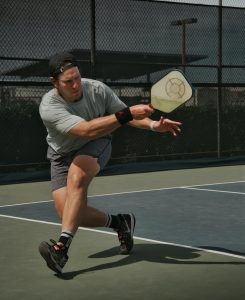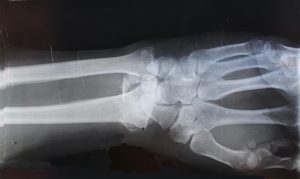
If something positive could be said for the past year, it would be the growing participation in outdoor activity. As pandemic lockdowns shut down restaurants, stores, schools, and our entire way of life, many people began to get more active, whether it be to entertain pent-up children, to get in shape, for mental wellbeing, or to simply occupy free-time.
Outdoor sports, such as swimming, running, basketball, and tennis, have seen spikes in participation. National parks are overrun with visitors looking to hike, camp, and enjoy nature. One sport that has seen record interest, in particular, is biking. From e-bikes to road bikes to gravel bikes, bike sales are up over 100% in many countries. And it’s no wonder why: biking is an accessible, rewarding sport. It can be as serious as you make it. Whether you join a local league to push your limits or simply enjoy pedaling around your local park, biking is fun, relatively inexpensive, and a great form of exercise.
Louisville is a biker’s paradise. With hundreds of miles of paved and dirt trails, dozens of bike rental options, and a thriving cycling community, there’s no end to opportunity. Check out these 8 great paths for all types of bikes and skill levels:
8 Best Bike Paths in Louisville
1. Louisville Loop: Parklands of Floyds Fork
One of the most exciting initiatives in recent history is the Louisville Loop, a 100+ mile path planned to circumnavigate the city. While the Loop isn’t fully completed, many sections of it are entirely accessible. One 19-mile section runs through the Parklands of Floyds Fork, a massive system of 4 interconnected parks featuring hiking trails, scenic overlooks, event venues, fishing, sports fields, kayaking, and more. The Louisville Loop at the Parklands is accessible for any level of biker, boasting stunning panoramas, clear mile markers, 5 bike repair stations, and easily accessible parking lots and bathrooms. See the full map here.
2. Cherokee and Seneca Park (Paved/Dirt Paths)
Two large, interconnected parks in the heart of metropolitan Louisville are Cherokee and Seneca Park. New bikers, families, and experienced teams can use the web of wooded mountain bike paths, paved paths, and bike lanes. These parks offer challenging hills as well as flat, open terrain.
3. Louisville Loop: Shawnee Park to Caperton Swamp
Another completed section of the Louisville Loop path runs 11.6 miles alongside the Ohio. This route goes through the many riverside parks and bridges as well as downtown Louisville, allowing easy access-points. It is very flat and accessible for every type of biker.
4. Turkey Run Park (at the Parklands)
For mountain bikers, the Parklands: Turkey Run Park offers multiple rugged forested paths (Paw Paw Trail, Hickory Trail, Chinkapin Trail, etc.) and an incredible bike-only park at the Silo Center. Explore these trails here.
5. Clinic and Twisty Bend at Waverly Park
Mountain bikers looking for a thrill should explore the Waverly Park bike paths, a series of fast, manicured dirt loops. Although short, these trails are said to be excellent for race-training.
6. Iroquois Park Loop
Iroquois Park offers a 3.3 mile paved perimeter trail as well as a challenging car-free road that ascends to the top of Iroquois Hill, a scenic overlook that provides views as far as downtown Louisville and Floyds Knobs in Indiana. Iroquois offers options for both families and seasoned bikers.
7. Ohio River Greenway Trail
While not technically in Louisville, the Ohio River Greenway Trail is a short-trip across the Big Four Bridge. This beginner-friendly, 6+ mile paved trail runs alongside the river, through Jeffersonville, Clarksville, the Falls of The Ohio State Park, and into downtown New Albany, connecting to the Clarksville Heritage Trails as well.
8. Anchorage Trail
Another great family option is the 2.1 mile Anchorage Trail, an easy, paved path that offers beautiful views of a creek and rolling fields.
Get Involved
If you’re looking to get involved in the Louisville bike community, you may be interested in perusing this list of local organizations and bike shops, linked here, or the local race teams page, here.
If you or someone you love has suffered a bike or sports-related injury in the Louisville, Kentucky-area, board certified sports medicine physician Dr. Stacie Grossfeld at Orthopaedic Specialists PLLC can help. Orthopaedic Specialists PLLC is accepting new patients. Same day appointments and telemedicine appointments are also available. For additional information or to schedule an appointment, please contact Orthopaedic Specialists PLLC today at 502-212-2663.










Recent Comments